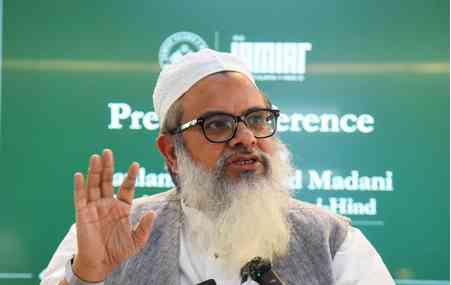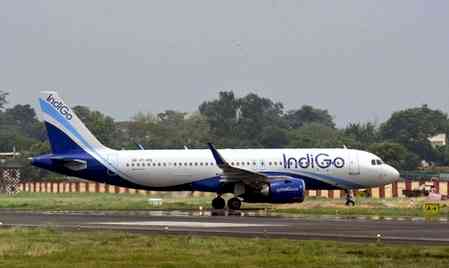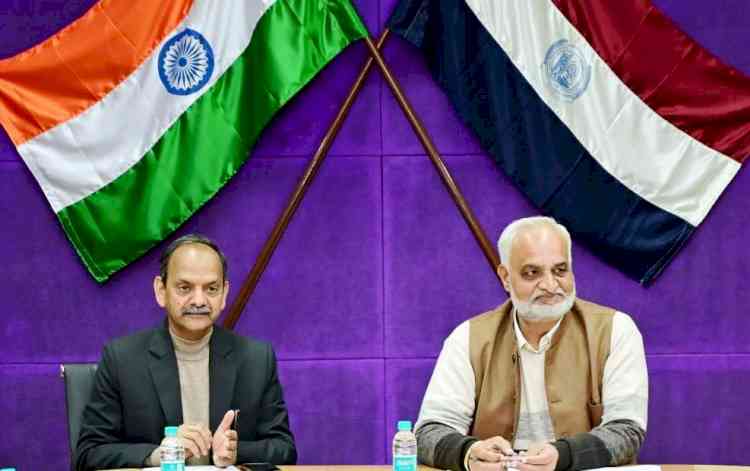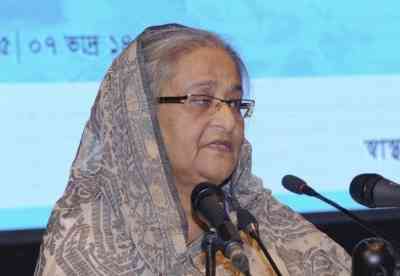Canal water resulted into bumper crops and Green Revolution in Punjab

In the Pre Independence-period the main source of irrigation for agriculture sector was based on canal water irrigation through canal irrigation systems or by the nature (monsoons). In the Post Independence period Punjab comprise of Sirhind Canal, Bist Doab Canal, Bhakra Main Line (BML) Canal, Upper Bari Doab Canal, Eastern Canal, Rajasthan Feeder, Sarhind Feeder, Shah Nehar Canal and Kandi Canal. The Rajasthan Feeder and Bikaner Canal which carry Ravi-Beas and Sutlej water exclusively for Rajasthan also run in a considerable length over Punjab Territory. The Sirhind Canal is about 150 years old. The Sirhind Canal which starts from Ropar Headworks has an authorised capacity of 12620 cusecs of water. The Sirhind Canal and its distribution network are spread over a length of 3215-Km.
The Bhakra Main Line Canal is an extension of Nangal Hydel Channel. The capacity of Nangal Hydel Channel which starts from Nangal Barrage downstream of Bhakra Dam is 12500 Cusec. The Bhakra Main Line has a length of about 164Km, out of which 159 Km falls in Punjab Territory and the balance is in Haryana. The BML canal was built during 1950-54. It is an inter-state channel which supplies water for irrigation and drinking purposes to Punjab, Haryana and Rajasthan. The drinking water supplies are also made to Chandigarh and Delhi through the BML Canal.
The Bist Doab Canal starts from the right bank of river Sutlej upstream of Ropar Headworks. The Bist Doab Canal system, constructed in 1954-55, is spread over a length of 805 Km. The canal has an authorized capacity of 1452 Cusec. The Rajasthan Feeder which carries Ravi-Beas waters exclusively for Rajasthan off- takes from Harike Headworks. It has a capacity of 18500 Cusecs. However, the head regulator of the canal has a capacity of 15000 Cusecs which is sufficient for supplying allocated Quantum of Ravi Beas waters to Rajasthan. The canal which was constructed in the year 1958-1961, runs in a length of 149.53 Km in Ferozepur, Muktsar and Faridkot districts of Punjab. This canal is also known as Indira Gandhi Canal in Rajasthan which has changed the total environment of Rajasthan in the Agriculture sector. The Sirhind Feeder originates from Ferozepur and it was constructed during 1954-55 and runs in a length of about 136.50 Km.
The seepage from Rajasthan Feeder and Sirhind Feeder in Punjab Territory has assumed alarming proportions in as much areas adjoin the canals, the seepage from these canal systems in the past bringing the underground water table high and even above the sub soil, hectare of fertile land critically affected by waterlogging in Faridkot, Muktsar, Malout, Lambi, Abohar and Gidderbaha tracts of Punjab, 25% area is adjoining Rajasthan and Sirhind Feeders but the Punjab Irrigation Department through its visionary approach sidelined the threat of waterlogging through digging of new trenches and the land which had become unfertile was once again became fertile.
Eastern Canal is a non-perennial system. Its construction was completed in 1927 and it used to off take from Hussainiwala Headworks. However, after the construction of Harike Headworks, the supply of water to Eastern canal system and Bikaner Canal has been switched over to Harike Headworks.
In the Foot Hills of Shivalik Range the Punjab Irrigation Department brought the concept of Deep Tubewells in Seventies to produce various crops in the Kandi Area. As in the past the agriculture of Kandi area was fully dependent on monsoon rains. With the deep tubewells the area of Kandi is now producing bumper crops. The then MP Avinash Rai Khanna had focused on deep tubewells in the Bet Area and with the installation of these deep tubewells the area which totally dependent on monsoon produced variety of crops and the same tubewell water became the lifeline of the area for drinking water also.
At present, Punjab Water Resources Department is focusing on switching most of the agriculture irrigation through canal water where it is possible. The Shahpur Kandi Barrage is almost ready and in future not even single drop water will enter the neighbouring country and entire water of Ravi will be utilised for irrigation purposes.
Authored by:
Rajat Kumar Mohindu,
Senior Journalist,
Jalandhar City.


 Rajat Kumar
Rajat Kumar 











